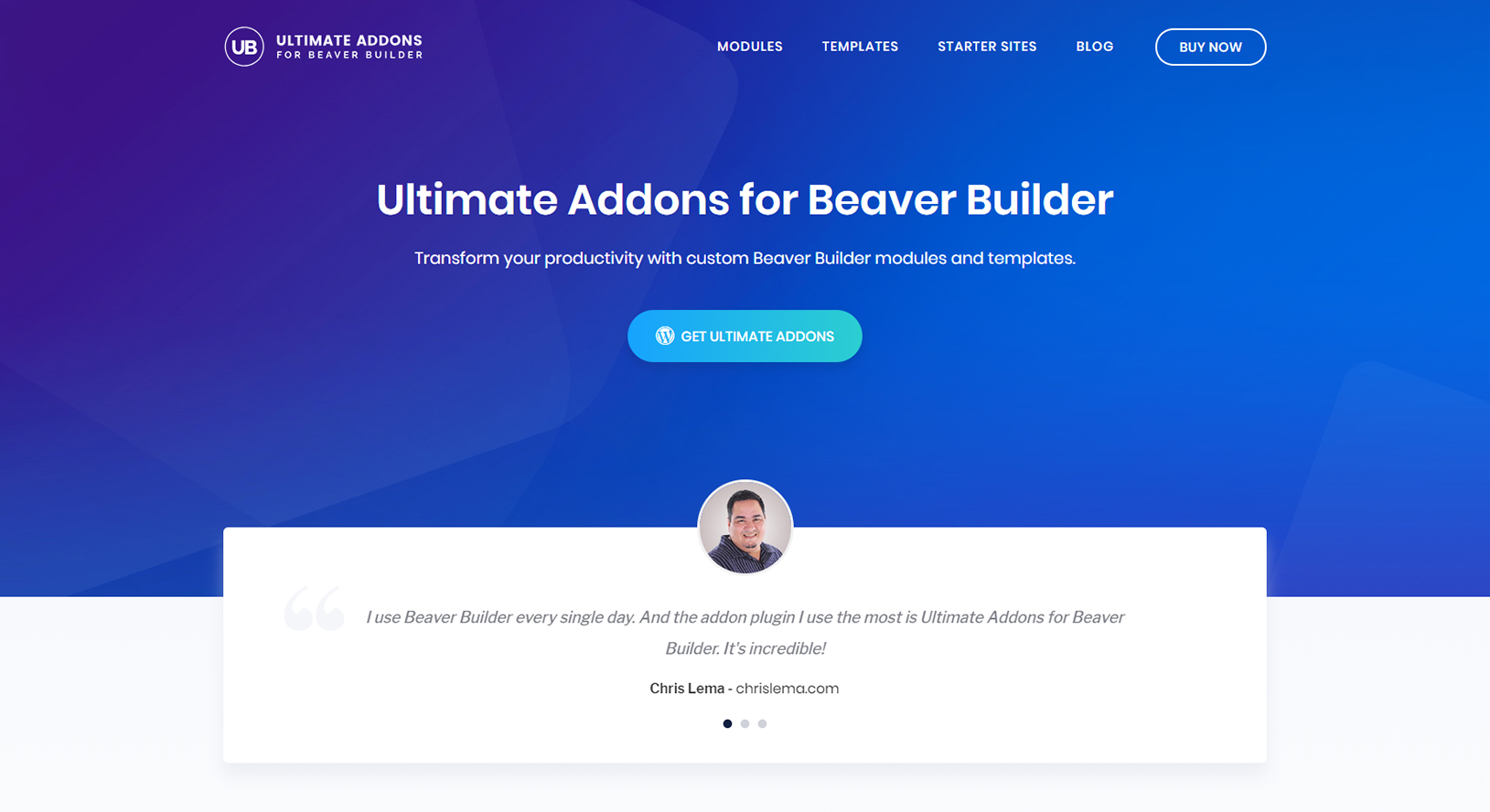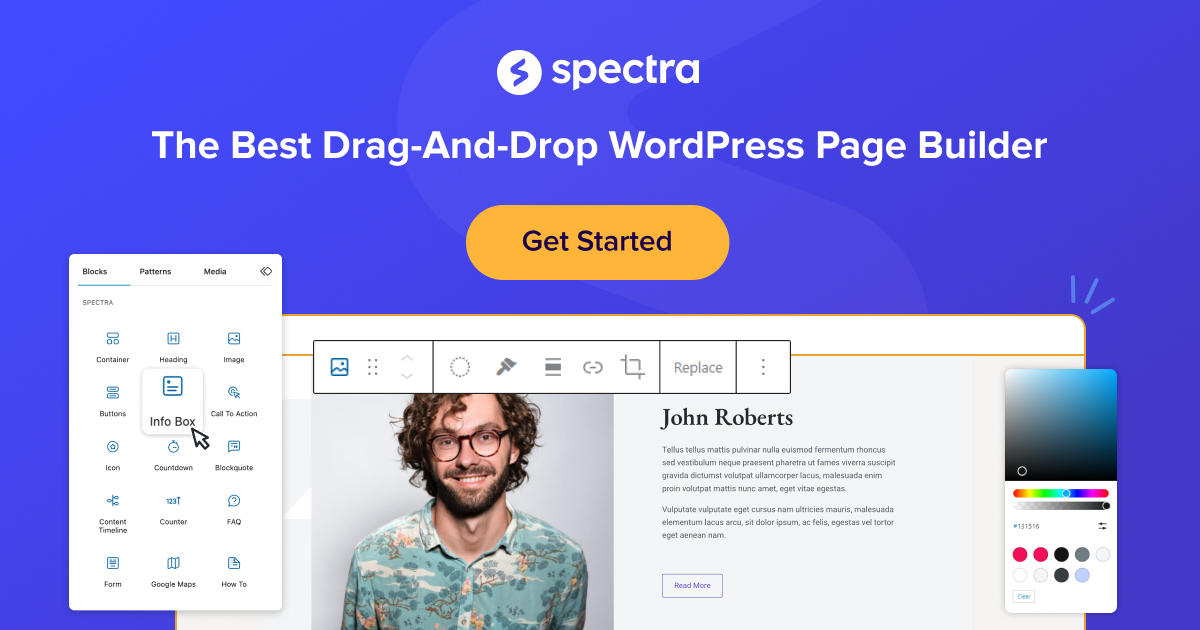Creating a strong online presence is essential for any organization, but it’s particularly vital for nonprofits. Whether you’re aiming to spread awareness, fundraise, or mobilize volunteers, having a professional and user-friendly website can make a world of difference. This guide explores the best website builders for nonprofits, offering insights into how you can build an impactful nonprofit website without breaking the bank or needing extensive technical skills.
Why a Professional Website is Crucial for Nonprofits
A professional website is more than just an online brochure for your nonprofit; it’s a powerful tool that can drive engagement, donations, and awareness. Here are some reasons why a professional website is crucial:
Enhances Credibility
A well-designed, professional-looking website can significantly enhance the credibility of your nonprofit organization. Potential donors, volunteers, and supporters are more likely to trust and engage with a nonprofit that has a polished and informative online presence.
Facilitates Fundraising
A good website can streamline the donation process, making it easy for supporters to contribute. Features like secure donation forms, automated receipts, and donor management tools can help you raise more funds more efficiently.
Increases Visibility
A website optimized for search engines can help increase your nonprofit’s visibility, attracting more visitors who are interested in your cause. This can lead to more support, whether it’s through donations, volunteer sign-ups, or social media shares.
Top Features to Look for in a Nonprofit Website Builder
When choosing a website builder for your nonprofit, consider the following features to ensure you get the best value and functionality:
User-Friendly Interface
Ease of use is paramount, especially if your team lacks technical expertise. Look for a website builder with a drag-and-drop interface and intuitive design tools that make the website creation process straightforward.
Customization Options
Your website should reflect your nonprofit’s unique brand and mission. Choose a builder that offers a variety of templates, fonts, colors, and layout options so you can create a customized, professional-looking website.
Fundraising Tools
Effective fundraising features are crucial for any nonprofit website. Look for builders that offer integrated donation forms, donor management systems, and the ability to create fundraising campaigns.
SEO Capabilities
Search engine optimization (SEO) is essential for increasing your website’s visibility. Ensure the website builder includes SEO tools that help you optimize your site’s content, meta tags, and URLs for better search engine rankings.
Mobile Responsiveness
With more people accessing websites on their mobile devices, having a mobile-friendly website is crucial. Choose a builder that ensures your website looks and functions well on all screen sizes.
How to Choose the Right Website Builder for Your Nonprofit
Selecting the right website builder can be overwhelming, given the myriad options available. Here’s a step-by-step guide to help you make an informed decision:
Define Your Needs
Start by identifying your nonprofit’s specific needs. Do you need robust fundraising tools? Are you looking for a website builder that offers nonprofit discounts? Make a list of must-have features before you begin your search.
Research and Compare
Take the time to research different website builders and compare their features, pricing, and user reviews. Look for builders that are designed specifically for nonprofits or offer features that cater to nonprofit organizations.
Take Advantage of Free Trials
Most website builders offer free trials or free plans. Use these to test out the platforms and see which one best suits your needs. Pay attention to ease of use, customization options, and the availability of nonprofit-specific tools.
Evaluate Customer Support
Good customer support is essential, especially if you encounter issues during the website creation process. Look for website builders that offer comprehensive support, including live chat, email, and phone support.
The Best Website Builders for Nonprofits: A Detailed Review
Wix
Wix is one of the most popular website builders, known for its user-friendly interface and extensive customization options. Here’s why it’s a great choice for nonprofits:
Ease of Use
Wix offers a drag-and-drop editor that makes it easy to build a website without any coding skills. Its intuitive design tools allow you to create a professional-looking website quickly and efficiently.
Customization
With Wix, you have access to a vast library of templates and design elements. You can customize everything from the layout to the fonts, colors, and images, ensuring your website reflects your nonprofit’s brand.
Fundraising Tools
Wix offers integrated donation forms and the ability to create fundraising campaigns. You can also add e-commerce features if you plan to sell merchandise or event tickets.
SEO Capabilities
Wix provides robust SEO tools, including customizable meta tags, alt text for images, and a built-in SEO wizard that guides you through the optimization process. This ensures your website ranks well on search engines, attracting more visitors.
Weebly
Weebly is another excellent option for nonprofits, offering a balance of ease of use and powerful features. Here’s what makes Weebly a top choice:
User-Friendly Interface
Weebly’s drag-and-drop builder is straightforward and easy to use, even for beginners. It allows you to create and update your website without needing any technical skills.
Customization
Weebly offers a variety of templates that you can customize to match your nonprofit’s branding. You can also use custom HTML and CSS for more advanced customization.
Fundraising Tools
Weebly supports integrated donation forms and third-party apps that allow you to manage donations and fundraising campaigns. You can also add an online store to sell products or accept event registrations.
SEO Capabilities
Weebly includes essential SEO tools, such as customizable URLs, meta descriptions, and alt text for images. These features help improve your website’s search engine rankings and attract more visitors.
Squarespace
Squarespace is known for its stunning designs and robust features, making it a great choice for nonprofits looking to create a visually appealing website.
Ease of Use
Squarespace’s interface is user-friendly, with a drag-and-drop editor that simplifies the website creation process. It also offers a range of tutorials and customer support to help you get started.
Customization
Squarespace provides a wide selection of professionally designed templates that you can customize to fit your nonprofit’s needs. You can adjust the layout, fonts, colors, and images to create a unique website.
Fundraising Tools
Squarespace supports integrated donation forms and offers e-commerce features for selling products or event tickets. You can also use third-party apps to enhance your fundraising capabilities.
SEO Capabilities
Squarespace includes built-in SEO tools that help you optimize your website’s content for search engines. This includes customizable meta tags, alt text for images, and an SEO checklist to guide you through the optimization process.
WordPress
WordPress is a powerful and flexible website builder that’s ideal for nonprofits with more advanced needs. Here’s why WordPress stands out:
Flexibility
WordPress offers unparalleled flexibility, allowing you to create any type of website you need. With thousands of themes and plugins, you can customize your site to meet your nonprofit’s specific requirements.
Customization
WordPress themes are highly customizable, and you can use plugins to add functionality to your site. Whether you need a donation form, event calendar, or membership system, there’s a plugin for it.
Fundraising Tools
WordPress supports a wide range of fundraising plugins that allow you to accept donations, manage donors, and run fundraising campaigns. You can also integrate with popular payment gateways for secure transactions.
SEO Capabilities
WordPress is highly SEO-friendly, with plugins like Yoast SEO and rankmath that help you optimize your site’s content. You can customize meta tags, alt text, and URLs to improve your search engine rankings.
Jimdo
Jimdo is a user-friendly website builder that’s ideal for small nonprofits looking for a quick and easy way to get online.
Ease of Use
Jimdo’s AI-powered website builder guides you through the website creation process, making it easy to get your site up and running quickly. You don’t need any coding skills to create a professional-looking website.
Customization
Jimdo offers a range of templates that you can customize to fit your nonprofit’s branding. You can adjust the layout, colors, and images to create a unique and professional-looking website.
Fundraising Tools
Jimdo supports integrated donation forms and offers an e-commerce feature for selling products or event tickets. You can also use third-party apps to enhance your fundraising capabilities.
SEO Capabilities
Jimdo includes essential SEO tools, such as customizable meta tags, alt text for images, and an SEO checklist to guide you through the optimization process. This ensures your website ranks well on search engines and attracts more visitors.
How to Build a Nonprofit Website Step-by-Step
Building a nonprofit website may seem daunting, but with the right tools and a clear plan, you can create an effective online presence for your organization. Here’s a step-by-step guide to help you get started:
Step 1: Choose Your Website Builder
Based on the reviews above, select the website builder that best meets your nonprofit’s needs. Consider factors like ease of use, customization options, and fundraising tools.
Step 2: Select a Template
Choose a template that reflects your nonprofit’s brand and mission. Most website builders offer website templates designed specifically for nonprofits, making it easy to find one that suits your needs.
Step 3: Customize Your Website
Use the website builder’s design tools to customize your site. Add your nonprofit’s logo, adjust the colors and fonts, and arrange the layout to create a professional-looking website.
Step 4: Add Content
Create pages for your website, such as a homepage, about page, donation page, and contact page. Add content that clearly communicates your nonprofit’s mission, goals, and how visitors can get involved.
Step 5: Set Up Fundraising Tools
If your website builder supports integrated donation forms, set them up to accept donations. You can also create fundraising campaigns or add an online store to sell merchandise or event tickets.
Step 6: Optimize for SEO
Use the website builder’s SEO tools to optimize your site’s content for search engines. Customize meta tags, alt text for images, and URLs to improve your search engine rankings and attract more visitors.
Step 7: Test and Launch
Before launching your website, test it thoroughly to ensure everything works correctly. Check for broken links, test the donation forms, and make sure the site looks good on all devices. Once you’re satisfied, publish your website and start promoting it.
Customizing Your Nonprofit Website: Tips and Tricks
Customizing your nonprofit website is crucial to creating a unique and engaging online presence. Here are some tips and tricks to help you make the most of your website builder’s customization options:
Use High-Quality Images
High-quality images can make a significant impact on your website’s visual appeal. Use professional photos that reflect your nonprofit’s mission and activities. Avoid using stock photos that look generic or staged.
Keep Your Design Consistent
Consistency in design elements, such as fonts, colors, and layout, helps create a cohesive and professional look. Use your nonprofit’s branding guidelines to ensure consistency across all pages of your website.
Add Engaging Content
Engaging content is key to keeping visitors on your website. Use compelling headlines, clear and concise text, and multimedia elements like videos and infographics to convey your message effectively.
Highlight Your Calls to Action
Make sure your calls to action (CTAs) are prominent and clear. Whether it’s encouraging visitors to donate, volunteer, or sign up for your newsletter, use buttons and links that stand out and guide users towards taking action.
Optimizing Your Nonprofit Website for Search Engines
Search engine optimization (SEO) is essential for increasing your nonprofit website’s visibility and attracting more visitors. Here are some SEO tips to help you get started:
Use Relevant Keywords
Identify keywords that are relevant to your nonprofit and incorporate them into your website’s content. Use these keywords in your page titles, meta descriptions, headers, and throughout your text to improve your search engine rankings.
Optimize Your Meta Tags
Meta tags, such as title tags and meta descriptions, play a crucial role in SEO. Make sure each page of your website has unique and descriptive meta tags that include your target keywords.
Add Alt Text to Images
Alt text helps search engines understand the content of your images. Use descriptive alt text that includes relevant keywords to improve your site’s SEO and accessibility.
Create High-Quality Content
Search engines favor websites with high-quality, informative content. Create content that is valuable to your audience, such as blog posts, articles, and resources related to your nonprofit’s mission.
Build Backlinks
Backlinks, or links from other websites to your site, can improve your search engine rankings. Reach out to partners, supporters, and other organizations to build backlinks and increase your site’s authority.
Managing and Updating Your Nonprofit Website
Keeping your nonprofit website up to date is crucial for maintaining its effectiveness and relevance. Here are some tips for managing and updating your site:
Regularly Update Your Content
Keep your website’s content fresh and relevant by regularly updating it. Add new blog posts, update event information, and refresh your images and text to keep visitors engaged.
Monitor Your Site’s Performance
Use tools like Google Analytics to monitor your website’s performance. Track metrics like page views, bounce rate, and conversion rate to identify areas for improvement and measure your site’s success.
Ensure Your Site is Secure
Security is crucial for any website, especially if you’re handling donations and sensitive information. Make sure your website builder offers secure website hosting and regularly update your site’s software to protect against security threats.
Gather Feedback
Ask your supporters and visitors for feedback on your website. Use surveys, polls, and direct feedback to identify areas for improvement and make changes that enhance the user experience.
Leveraging Your Nonprofit Website for Fundraising
Your nonprofit website can be a powerful fundraising tool if used effectively. Here are some strategies to help you leverage your site for fundraising:
Create Compelling Campaigns
Use your website to create and promote fundraising campaigns. Highlight the impact of donations, set clear goals, and use engaging visuals and stories to encourage visitors to contribute.
Make it Easy to Donate
Ensure your donation process is straightforward and user-friendly. Use secure, integrated donation forms and offer multiple payment options to make it easy for supporters to give.
Promote Your Campaigns
Use your website’s blog, social media, and email newsletters to promote your fundraising campaigns. Share updates, success stories, and progress towards your goals to keep supporters engaged and motivated.
Recognize Your Donors
Show appreciation for your donors by recognizing them on your website. Create a donor wall, share testimonials, and highlight the impact of their contributions to build a sense of community and encourage repeat donations.
Case Studies: Successful Nonprofit Websites Built Using These Builders
Case Study 1: Charity: Water
Charity: Water uses Squarespace to create a visually stunning and highly effective nonprofit website. The site features compelling stories, high-quality images, and a seamless donation process, making it easy for visitors to support their cause.
Case Study 2: Pencils of Promise
Pencils of Promise uses WordPress to create a dynamic and engaging website that highlights their mission and impact. The site includes integrated donation forms, an online store, and a blog that keeps supporters informed and engaged.
Case Study 3: The Trevor Project
The Trevor Project uses Wix to create a user-friendly website that provides vital resources and support for LGBTQ youth. The site features a clean design, easy navigation, and integrated donation tools that make it easy for visitors to contribute.
Case Study 4: World Wildlife Fund
The World Wildlife Fund uses Weebly to create an informative and visually appealing website that promotes their conservation efforts. The site includes engaging content, integrated fundraising tools, and a mobile-friendly design that ensures a seamless user experience.
Case Study 5: Habitat for Humanity
Habitat for Humanity uses Jimdo to create a simple yet effective website that highlights their mission and projects. The site features integrated donation forms, volunteer sign-up forms, and an online store that supports their fundraising efforts.
Bullet Point Summary
- A professional website is crucial for enhancing credibility, facilitating fundraising, and increasing visibility for nonprofits.
- Top features to look for in a nonprofit website builder include a user-friendly interface, customization options, fundraising tools, SEO capabilities, and mobile responsiveness.
- The best website builders for nonprofits include Wix, Weebly, Squarespace, WordPress, and Jimdo, each offering unique features and benefits.
- Building a nonprofit website involves choosing the right website builder, selecting a template, customizing your site, adding content, setting up fundraising tools, optimizing for SEO, and testing before launch.
- Customizing your nonprofit website with high-quality images, consistent design, engaging content, and clear calls to action can enhance its effectiveness.
- Optimizing your nonprofit website for search engines involves using relevant keywords, optimizing meta tags, adding alt text to images, creating high-quality content, and building backlinks.
- Managing and updating your nonprofit website involves regularly updating content, monitoring performance, ensuring security, and gathering feedback.
- Leveraging your nonprofit website for fundraising involves creating compelling campaigns, making it easy to donate, promoting your campaigns, and recognizing your donors.
- Successful nonprofit websites built using these builders include Charity: Water, Pencils of Promise, The Trevor Project, World Wildlife Fund, and Habitat for Humanity.
By following this comprehensive guide, your nonprofit can create a professional and impactful website that drives engagement, donations, and awareness for your cause.









